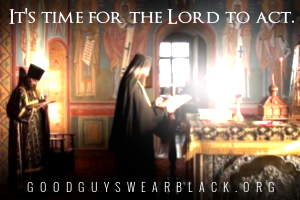![]()
The primitive Church was far from primitive in their understanding, and expression, of Christology.
by Fr. Patrick Henry Reardon
The most primitive confessional formulas of Christology (those preserved, for instance, in Romans 1:3-4 and Galatians 4.4) continued to shape the Church’s understanding of Jesus through the second century (Justin and Irenaeus, for instance). This pattern continued into the third century, nor was it limited to Greek writers. In the early third century, we find it, as well, in the Latin Apologist, Tertullian.
This is notable in two of his more mature treatises, On the Flesh of Christ and Against Praxeas, both works dated between 208 and 213.
Providing insights (and some vocabulary) for the later Christological development of Augustine and Leo (and, through them, the Council of Chalcedon), Tertullian argues that Jesus cannot be made up of a jumbling of two “states” that are changed by being mixed. Jesus Christ is no
“tertium quid, a confusion formed by mixing two things (ex utroque confusum)” (Against Praxeas 27.12).
The Lord’s divinity was not diminished by his humanity, nor was his humanity rendered less human by its union with the eternal Word.
Jesus Christ, in the theological vision of Tertullian, is a single and unique subject in which are found, in their integrity, both divinity and humanity.
“We see a double state (duplicem statum),” Tertullian writes, “not confused but joined together (non confusum sed coniunctum) in una persona, Jesus, both God and man.”
In testimony to this truth, Tertullian invokes the primitive creedal formula preserved in the opening verses of Romans:
“Thus the Apostle also teaches with respect to [Christ’s] each state (de utraque substantia), for he says, ‘he was made of the seed of David (factus est de semine David)’—he will be both a man and a son of man—‘he was appointed Son of God according to the Spirit”—he will be both God and Son of God'” (27.11).
Tertullian draws particular attention to the participle factus in the Christological formula preserved in the opening verses of Romans: factus est de semine David, “was made from the seed of David.” He comments on the verbal similarity between the Johannine affirmation,
“the Word was made (factum) flesh,”
and the Pauline description,
“His Son, made (factus) of a woman.”
Paul chose to write factus instead of natus (“born”), says Tertullian, in order to stress the reality, or truth, of the Incarnation: carnis veritatem (On the Flesh of Christ 20.2).
Tertullian is impressed that Paul, when he refers to Jesus’ mother, calls her a “woman” (mulier) instead of a “virgin.” The reason for this choice, Tertullian speculates, was to give recognition to (agnovit) the biological fact of Christ’s human birth:
adapertae vulvae nuptialem passionem (23.5).
Again citing Galatians 4:4 as his authority, Tertullian invokes this same concern as the reason Gabriel greeted Mary as
“blessed among women,” not ‘blessed among virgins’ (De Virginibus Velandis 6.1).
These primitive formulas of Christology continued to guide the Church during the period of the Ecumenical Councils. To refute the Arians, for instance, they were cited by
- Athanasius (Against the Arians 3.31; Letter to Serapion 22),
- Hilary (On the Trinity 12.48),
- Basil (On the Trinity 12.48)
- Ambrose (On the Holy Spirit 6.59; On the Christian Faith 1.14.94; 3.4.26; 3.9.61), and
- Leo of Rome (Sermons 23.2).
Saint Augustine may be taken to speak for the whole Tradition on this matter when he declared that God sent His Son, ut manens Deus fieret homo,
“so that, remaining God, he might become a man” (Tractatus in Ioannem 124.5.32).
For the recognized Church Fathers, the confessional formulas preserved in Romans 1:34 and Galatians 4:4—formulas modern scholarship recognizes as pre-Pauline—amply testified that the Jesus of history was not a mixed being, partly human and partly divine. Jesus was not a tertium quid.
Although unfamiliar with the technical vocabulary developed at a later period and enshrined in the Christological councils of the fifth century (physis, persona, natura, prosopon, hypostasis, etc.), they described Jesus as both God’s preexisting Son and as a real—not merely apparent—human being. They were equally opposed to Adoptionism (God “adopted” the man Jesus as His Son) and Docetism (God’s Son only “appeared” to be human).
